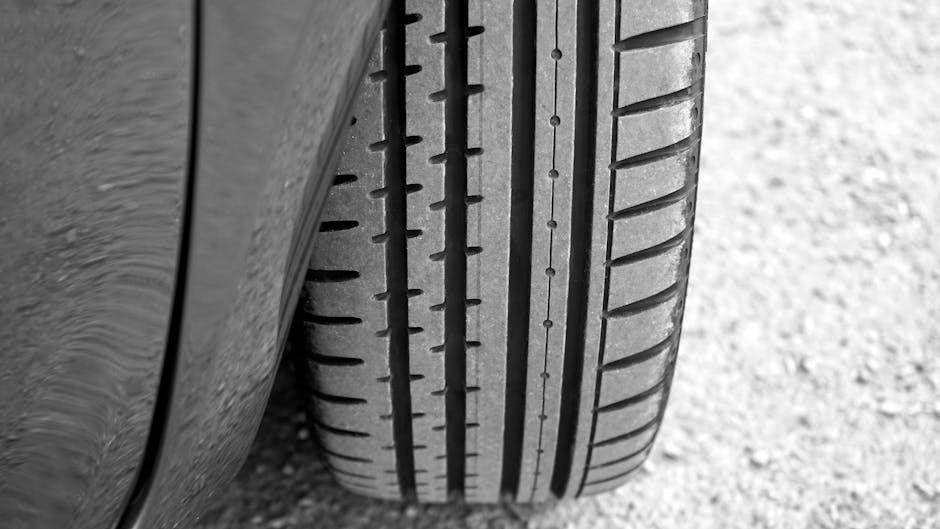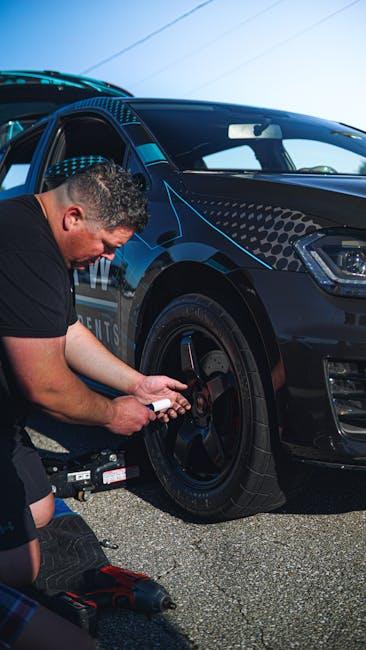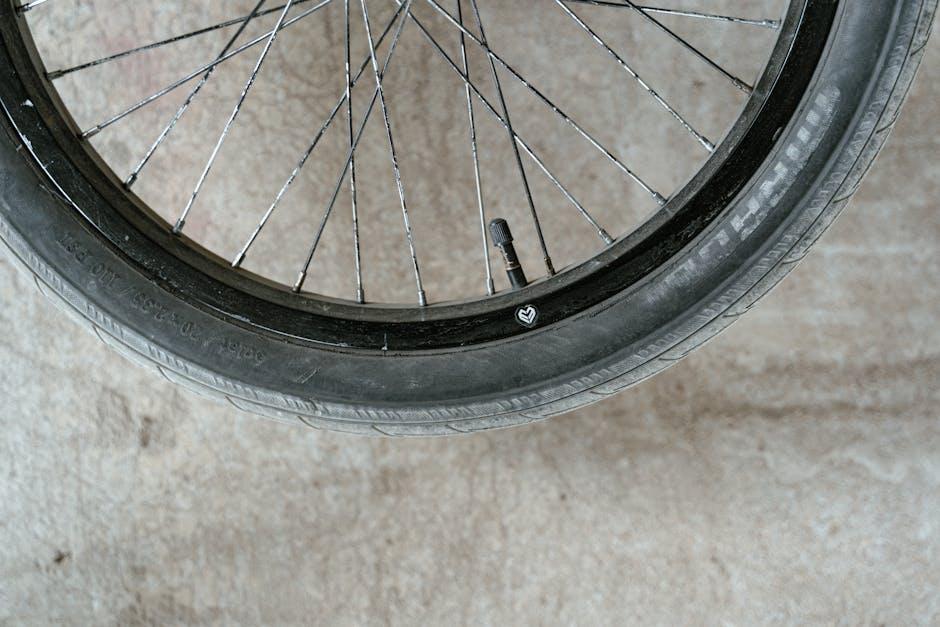Imagine driving down a smooth, winding road, the hum of the tires whispering beneath your car, promising a seamless journey. But what happens when that whisper turns into a rumble, or the steering veers unpredictably? Often, the answer lies in two essential yet frequently confused automotive services: wheel balancing and alignment. Though they both play crucial roles in tire performance and vehicle safety, understanding the difference between wheel balancing and alignment can make all the difference in maintaining your car’s health and your driving comfort. This article unpacks these concepts, separating fact from fiction to help you steer confidently through the mechanics of your ride.
Table of Contents
- Understanding Wheel Balancing and Its Impact on Ride Quality
- Exploring Wheel Alignment and Its Role in Vehicle Handling
- Key Differences Between Wheel Balancing and Alignment Procedures
- Common Signs Your Vehicle Needs Balancing or Alignment Services
- Choosing the Right Service Based on Driving Habits and Vehicle Type
- Maintenance Tips to Prolong Wheel Health and Performance
- Q&A
- In Retrospect

Understanding Wheel Balancing and Its Impact on Ride Quality
Wheel balancing is crucial for maintaining a smooth and comfortable ride. When your vehicle’s wheels are out of balance, you might experience vibrations, especially at higher speeds. This happens because uneven weight distribution causes certain parts of the wheel to spin with more force than others, leading to instability. Proper wheel balancing ensures that the weight is evenly distributed around the wheel and tire assembly, eliminating unwanted vibrations and reducing the wear and tear on your tires and suspension components.
Neglecting wheel balancing can lead to several ride quality issues, including:
- Increased tire wear, shortening the lifespan of your tires
- Steering wheel vibrations that can make handling difficult
- Strain on suspension components, leading to potential costly repairs
Investing in regular wheel balancing not only enhances driving comfort but also promotes vehicle safety by ensuring better traction and performance on the road.

Exploring Wheel Alignment and Its Role in Vehicle Handling
When it comes to maintaining optimal vehicle performance, ensuring your wheels are properly aligned is essential. Wheel alignment refers to the adjustment of your car’s suspension — the system that connects a vehicle to its wheels. Proper alignment guarantees that your tires meet the road at the correct angle, your wheels point straight ahead, and your tires are evenly spaced. This precision greatly affects steering responsiveness, fuel efficiency, and tire longevity. Misalignment can cause uneven tire wear, pulling to one side, and even vibrations, impairing the overall driving experience.
Key factors influenced by wheel alignment include:
- Camber: The inward or outward tilt of the tire when viewed from the front.
- Toe: The angle the tires turn in or out when viewed from above.
- Caster: The angle of the steering axis, affecting steering stability.
| Alignment Aspect | Effect on Handling | Signs of Misalignment |
|---|---|---|
| Camber | Improves cornering grip | Uneven tire wear on inner or outer edges |
| Toe | Enhances straight-line stability | Vehicle pulls left or right |
| Caster | Maintains steering wheel returnability | Steering feels loose or wanders |

Key Differences Between Wheel Balancing and Alignment Procedures
Wheel balancing focuses on evenly distributing the weight of the tire and wheel assembly to ensure smooth rotation. When wheels are unbalanced, they create vibrations that can be felt in the steering wheel or throughout the vehicle, especially at higher speeds. Balancing involves attaching small weights to the rim to counteract any heavy spots. This process primarily addresses issues that cause uneven tire wear and reduced fuel efficiency, making your ride more comfortable and maintaining tire longevity.
Alignment, on the other hand, concentrates on adjusting the angles of the wheels relative to the vehicle and the road surface. Proper alignment ensures optimal contact between the tires and the road, which improves handling, steering response, and extends tire life. Misalignment can cause pulling to one side, uneven tire wear, and steering issues. While balancing deals with the wheel’s uniform rotation, alignment corrects directional precision to keep your car driving straight and true.
| Aspect | Wheel Balancing | Wheel Alignment |
|---|---|---|
| Purpose | Smooth rotation, vibration-free ride | Correct steering, proper tire contact |
| Procedure | Adding weights to wheels | Adjusting camber, toe, and caster angles |
| Common Signs | Steering wheel shake, uneven tire wear | Car pulling to one side, uneven tread wear |
| Frequency | Every 5,000-6,000 miles or after tire changes | Annually or after suspension/steering repairs |

Common Signs Your Vehicle Needs Balancing or Alignment Services
Recognizing when your vehicle requires balancing or alignment services is crucial for maintaining a smooth and safe ride. One common indicator of imbalance is vibration in the steering wheel or through the car’s floor, especially at highway speeds. This buzzing sensation usually means your tires aren’t rotating evenly around the axle due to uneven weight distribution. On the other hand, if your vehicle consistently pulls to one side even on a straight road, or if your steering wheel isn’t centered when driving straight, it’s likely an alignment issue. Misalignment not only causes uneven tire wear but also affects your vehicle’s handling and fuel efficiency.
Other telltale signs often overlooked include:
- Uneven or rapid tire wear—indicating either alignment or balancing problems.
- Steering wheel wobble or shake—often linked to unbalanced wheels.
- Vehicle drifting during acceleration or braking, usually a sign of alignment trouble.
| Symptom | Likely Issue | Impact |
|---|---|---|
| Steering wheel vibration | Wheel Balancing | Uncomfortable ride |
| Car pulling left/right | Wheel Alignment | Uneven tire wear |
| Uneven tire tread wear | Both | Reduced tire lifespan |

Choosing the Right Service Based on Driving Habits and Vehicle Type
When deciding between wheel balancing and alignment services, your unique driving habits play a pivotal role in making the right choice. If you’re frequently navigating city traffic with lots of stop-and-go movement, or regularly drive on uneven, pothole-riddled roads, wheel balancing becomes essential to maintain smoothness and reduce wear on tires. On the other hand, if your typical journey involves long stretches on highways or precision maneuvers through winding roads, an alignment check ensures your tires maintain proper angles for optimal handling and fuel efficiency. Understanding these nuances helps you prioritize which service can extend your vehicle’s performance and comfort.
Vehicle type further influences the decision. For instance, sports cars or vehicles with low-profile tires often require more frequent alignments due to their sensitivity to even minor angle deviations. SUVs and trucks, which tend to carry heavier loads and operate in rugged environments, benefit significantly from regular wheel balancing to prevent vibrations and uneven tire wear. Here’s a quick breakdown to guide your choice:
- Commuter Cars: Balance every 6,000 miles; align annually or if vehicle pulls.
- Sports Vehicles: Prioritize alignment checks every 12,000 miles; balance as needed.
- SUVs & Trucks: Regular balancing every 5,000–7,000 miles; alignment checks post off-road use.
| Vehicle Type | Recommended Service | Frequency |
|---|---|---|
| City Compact | Wheel Balancing | Every 6,000 miles |
| Performance Sports Car | Alignment | Every 12,000 miles |
| Off-Road SUV | Wheel Balancing & Alignment | Balance every 5,000 miles; Align after off-road |

Maintenance Tips to Prolong Wheel Health and Performance
To keep your wheels operating smoothly and extend their lifespan, regular upkeep is essential. One of the most effective ways to protect your wheels is by maintaining proper tire pressure, which minimizes uneven wear and improves fuel efficiency. Additionally, rotating your tires every 5,000 to 7,000 miles helps ensure even tread wear, promoting better handling and extra durability. Don’t forget to inspect your tires frequently for any signs of damage like cuts, punctures, or bulges — early detection can save you from costly repairs and dangerous situations on the road.
Here are some practical maintenance tips to keep your wheels in top shape:
- Check and adjust tire pressure monthly using a reliable gauge.
- Have your wheels balanced after tire installation or if you experience vibrations.
- Schedule wheel alignment at least once a year, or when you notice uneven tire wear or your vehicle pulling to one side.
- Keep your wheels clean from dirt and brake dust to prevent corrosion.
| Maintenance Task | Recommended Frequency | Benefits |
|---|---|---|
| Tire Pressure Check | Monthly | Improves fuel economy and tire life |
| Tire Rotation | Every 5,000-7,000 miles | Ensures even tread wear |
| Wheel Balancing | After tire mounting or vibration | Reduces steering wheel vibration |
| Wheel Alignment | Annually or as needed | Prevents uneven tire wear, improves handling |
Q&A
Q: What is the main difference between wheel balancing and wheel alignment?
A: Wheel balancing ensures that the weight of the tire and wheel is evenly distributed around the axle, preventing vibrations. Wheel alignment, on the other hand, adjusts the angles of the wheels so they are set according to the car manufacturer’s specifications, improving tire wear and handling.
Q: Why does my car need wheel balancing?
A: Over time, wheels can develop weight imbalances due to uneven tire wear or small defects. Balancing corrects these imbalances by adding small weights, which helps eliminate vibrations felt in the steering wheel or throughout the vehicle, making your ride smoother.
Q: When should I get a wheel alignment?
A: If your car pulls to one side, the steering wheel is off-center, or if you notice uneven tire wear, it’s time for an alignment. Proper alignment ensures your tires meet the road at the right angle, extending their life and improving fuel efficiency.
Q: Can I do balancing and alignment at the same time?
A: Absolutely! While they address different issues, performing both together is often recommended when changing tires or noticing handling problems, ensuring your wheels are stable and properly aimed for optimal performance.
Q: What happens if I neglect wheel balancing?
A: Ignoring balancing can lead to uncomfortable vibrations, increased tire wear, and extra strain on suspension components, which may result in costly repairs down the road.
Q: And if I skip wheel alignment?
A: Poor alignment translates into uneven tire wear, poor fuel economy, and compromised handling, increasing the risk of unsafe driving conditions and early tire replacement.
Q: How can I tell if my wheels are out of balance or alignment?
A: Unbalanced wheels usually cause vibrations at certain speeds, especially felt through the steering wheel. Misaligned wheels may cause your vehicle to drift left or right, uneven tire wear, or a crooked steering wheel when driving straight.
Q: Is wheel balancing a DIY job?
A: Balancing requires specialized machines to detect where weights should be added, so it’s best left to professionals. Alignment also involves precise measurements and adjustments better handled by trained technicians.
Q: How often should I have wheel balancing and alignment performed?
A: As a rule of thumb, get your wheels balanced every time you install new tires and check alignment annually or whenever you notice handling issues, after hitting a curb, or following suspension repairs.
Q: Why do these two services often get confused?
A: Both involve wheels and tires, but their goals differ: balancing smooths out weight, while alignment corrects positioning. Understanding this distinction helps you address problems effectively and maintain your vehicle’s safety and comfort.
In Retrospect
In the dance of your vehicle’s wheels, both balancing and alignment play starring roles—each ensuring a smoother, safer ride in their own unique way. While balancing sifts out the subtle vibrations that can shake your drive, alignment keeps your wheels marching in perfect harmony down the road. Understanding the difference isn’t just a matter of mechanics; it’s a key to unlocking better performance, longer tire life, and greater peace of mind. So next time your car feels off-kilter or you notice uneven tire wear, you’ll know exactly which tune-up your ride needs to stay in sync. After all, when wheels work together flawlessly, the journey becomes the real reward.
